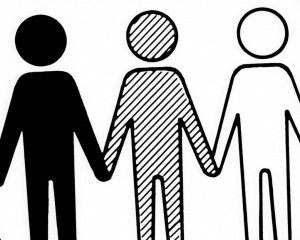(This essay was published in South China Morning Post on 14 December 2016.)
An estimated 36 percent of Secondary Five students lack a sense of national identity, according to a recent study by the Hong Kong Policy Research Institute. Some blame it on the government’s failure to introduce national education in the school curriculum. Yet their parents, who were not exposed to national education under British rule, apparently have a stronger sense of national identity. Why the difference?
The issue of national identity or lack of it among some of our young generation has become highly politicized in Hong Kong. Some students and their parents have actively agitated against introducing national education for fear it would brainwash young students.
The Chief Executive’s 2015 Policy Address targeted nativist and independence leaning sentiments expressed in a Hong Kong University student publication, which he heavily criticized. This escalated into the government disqualifying some candidates who previously voiced such sentiments from running in the Legislative Council elections in 2016.
Identity is highly subjective even if its presence or absence appears to be objectively measurable. There is a vast social science literature on how a person’s identity as belonging to a particular race, gender and ethnic group changes over time in response to social and economic realities. Understanding some aspects of how identity changes may help us think about Hong Kong’s national identity puzzle.
Lab experiments show that a light-skinned African American is more likely to be perceived as “black” if he has an “afro” hairstyle, or wears a janitor uniform rather than a business suit. People of mixed ancestry are more likely to be perceived as white if they are in a higher social position.
Two American sociologists, Aliya Saperstein and Andrew Penner, have examined the process of “racial fluidity” and found that an astonishing one fifth of Americans aged 14-22 first interviewed in 1979 experienced at least one change in racial classification over the next 19-year period.
This change was not random. Negative life events, such as incarceration, unemployment and divorce, increased the probability of being identified as “black” in a successive year, while positive outcomes increased the probability of being identified as “white.”
Both self-reporting subjects and interviewers changed their classifications of race over time in response to life transitions and in a manner consistent with the idea that perceived race reflects social status.
Stereotyping and social pressure to conform can also be found in political identity. Thus the young generation is less willing to openly identify themselves as conservatives and the old generation is less willing to identify themselves as radicals.
This should lead us to reconsider some important assumptions about identity. If identity fluidity is a common and not rare occurrence, it could lead us to exaggerate the contribution of race to social and economic inequality.
Race is thus not only biological, but also socially constructed. The process of social construction is, however, not neutral. So if you are unemployed and of mixed race in the US, society is more likely to classify you as black because of racial stereotyping, which triggers other forms of discrimination. Race becomes a powerful shaper of economic prospects in life.
When “localist” Leung Tin-Kei was discovered recently to have “biological” Mainland roots, it triggered an immediate debate over whether “localism” is socially or biologically reproduced. Obviously “localism” cannot be attributed to biology.
Three factors have probably contributed to the rise of “localism” in Hong Kong. First, the slow progress of democratization has channeled frustration among some segments of the population into indiscriminate hostility against all things associated with the Mainland. Ambitious politicians for opportunistic reasons have kindled such sentiments.
Second, almost two million new immigrants – more than one quarter of the population – have arrived since 1976, mostly from the Chinese mainland through cross–border marriage. This has worsened economic inequality and laid huge stress on many social resources, despite the robustness and integrity of Hong Kong’s economic and social institutions.
Third, the economic life prospects of the middle class have worsened since the mid-1990s, creating a growing near-poverty class who see the cherished comforts of life—homeownership, good health care, quality education for their children—to be increasingly beyond their reach. Like the sinking middle class in rich countries everywhere, some blame their predicament on new immigrants.
If I were to look for an explanation for the rise of localist sentiments in Hong Kong, it would be the falling economic and social circumstances of the have-nots since China’s opening. They blame it on the failure of Hong Kong’s political system to respond to their concerns. National education will not be enough to address their fears and anxieties, although it could promote better understanding. But “localist” sentiments have to be tackled through economic and social change.



